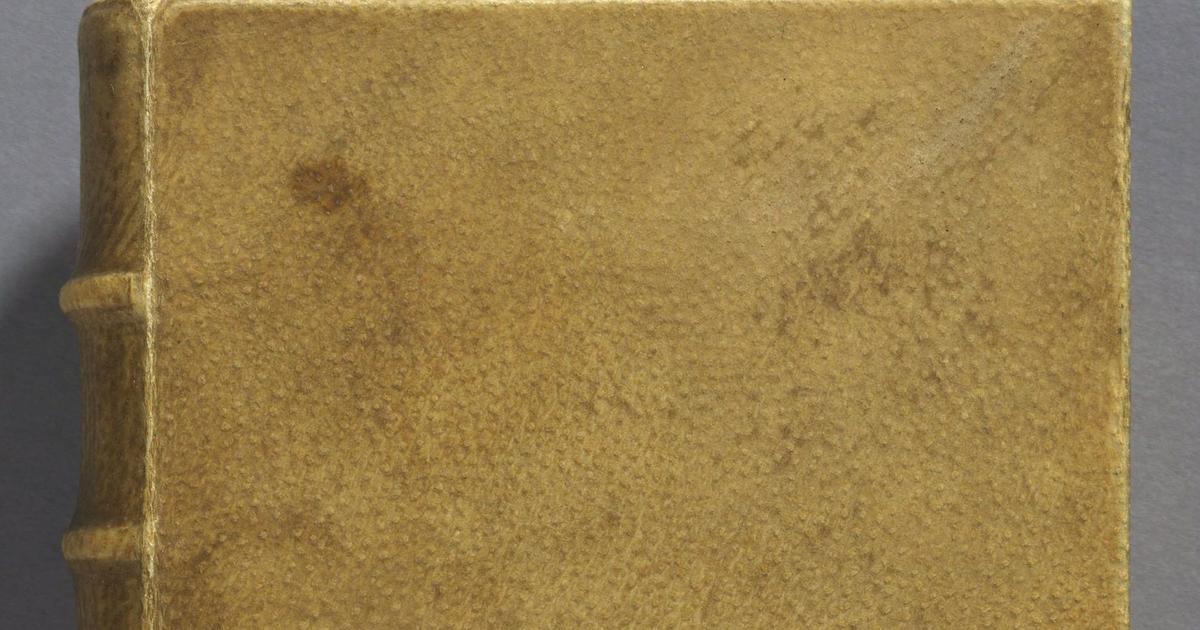Before mankind began using modern envelopes to hold letters and documents, the only way to protect and preserve the privacy of messages was to intricately fold the paper on which the information was written.
This security system, which worked for several centuries until the 1830s and served to make recipients realize if someone had read what was
wrong
, was called
letterlocking in
Anglo-Saxon countries
.
Until now, old letters, without an envelope and sealed with special folds and folds, could only be read by cutting and often damaging historical documents.
A team of researchers led by Jana Dambrogio, from the Conservation Laboratory at the Massachusetts Institute of Technology (MIT), and Amanda Ghassaei, from the Adobe Creative Intelligence Laboratory, developed a three-dimensional X-ray computational algorithm that was used to display and read virtually a collection of sealed letters, sent from all over Europe to The Hague between 1680 and 1706. According to the researchers, the categorization system, presented this Tuesday in the journal
Nature Communications,
was based on a study of more than 250,000 letters that helped understand how the different blocking strategies worked.
"For the first time we were able to virtually unfold and read the letters that were closed since they were written more than 300 years ago," Ghassaei explains.
The researcher says that the project to study the unlocking of letters began in 2000, when Dambrogio discovered in a file of legal documents of the Vatican a series of missives sealed with this security system.
“Years later we were lucky enough to contact a museum in The Hague that had a trunk with thousands of closed letters, called the Brienne Collection.
This marvelous mail box represented a radical change in what we think about the locking system and the research methods we would have to develop to understand it. "
The trunk contains 3,148 cataloged items, including 2,571 open letters, fragments and other documents, and 577 packages of sealed letters.
The technological development consists of a very high-resolution CT scan of the cards, "basically a 3D X-ray image," says Ghassaei.
The algorithm detects individual layers of paper in the scan and reconstructs the folded geometry.
“What we do is virtually unfold the card pack to produce an image of what it would look like if it were opened and flattened.
This allows us to observe the writing, the watermarks, the seals, the internal folds and any other information hidden within the packet of letters without damaging the original artifact ”, says the researcher.
Holly Jackson, from MIT's Department of Electrical Engineering and co-author of the study, tells by mail that the method they developed "produces almost complete reconstructions of the original states of four packets of letters, three of them unopened."
According to the researcher, the message and the intricate internal mechanics of these letters are only known to us because they have been virtually reconstructed.
"Our methods are completely automatic, without biases in scan orientation and do not require prior knowledge of the geometry of a chart pack," explains Jackson.
The researchers affirm that the content of the letters is made visible because most of the inks produce a different contrast than the paper on which they are written.
The virtual unfolding algorithm allows not only to read the unopened letters, but also to visualize the fold patterns and recreate the locking process step by step.
“Card blocking was an everyday activity for centuries, across cultures, borders, and social classes, and it plays an integral role in the history of secret systems.
It is the missing link between the physical communication security techniques of the ancient world and modern digital cryptography, ”the research reads.
Rebekah Ahrendt, from the Department of Media and Cultural Studies at the University of Utrecht, in the Netherlands, and a co-researcher on the project, says that during the course of work they discovered a letter that a lawyer in France had sent to her cousin in The Hague, dated 31 July 1697. "The translation that we were able to recover from one of the letters sealed in Brienne's trunk is interesting."
The letter asks for a "legalized extract" verifying the death of a relative.
According to the researchers, death certificates did not exist at that time;
instead, a notary would have to write a copy of the death record.
“The notary would then authorize the document with his signature and stamp.
It is likely that the document was necessary to resolve an inheritance dispute. "
For Ahrendt, knowing the care with which the lawyer prepared his letter, the way he folded and sealed it, "adds a whole new dimension to the story and makes it much more meaningful," says the researcher.
And he continues: “It is also true that these everyday letters from normal people of the past are very rare, so it is important to study them from multiple angles.
These letters provide us with unique evidence of the strong relationships that even non-elite people had with paper. "
The researchers hope that these results will help others find alternative ways to extract information from sealed historical documents, rather than damaging them in the opening process.
“Today we will publish all the code of the virtual deployment on Github and we hope that other researchers will work in the future on the reconstruction of historical documents, as well as other potential applications in engineering, origami study or medical imaging.
We are excited to see what other uses can be found, ”sums up Amanda Ghassaei.
You can follow
MATERIA
on
,
,
or subscribe here to our
newsletter






/cloudfront-eu-central-1.images.arcpublishing.com/prisa/BRRQWHKHTBFDJJ6EREN2ZD5LLE.png)
